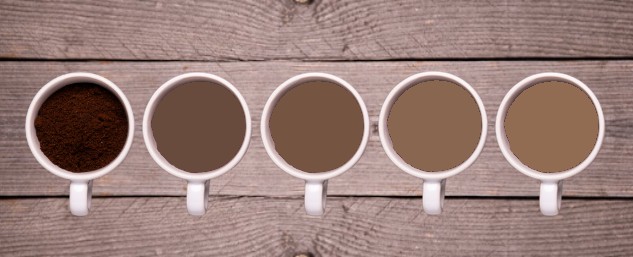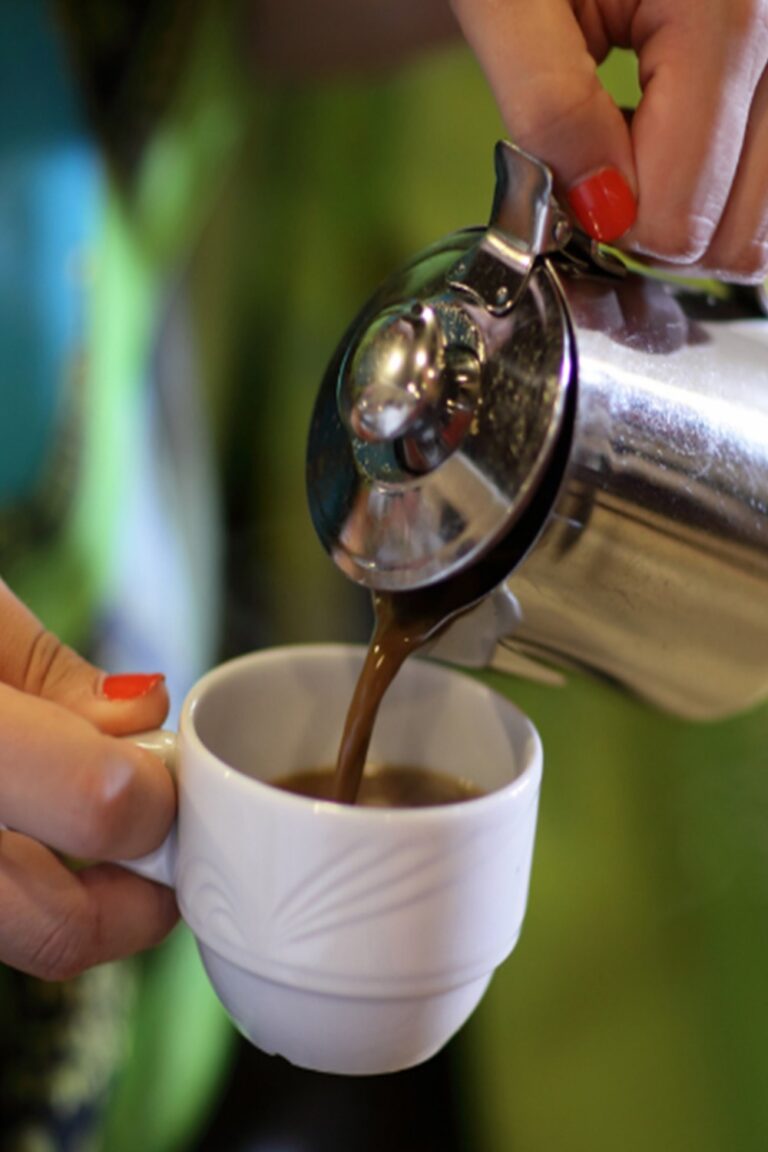*This post may contain affiliate links for which I earn commissions.*
Why Your Cup Ranges from Pale Amber to Deep Black
Have you ever brewed a cup of coffee and noticed how dramatically the color can vary? One morning it’s a rich, dark brown, and the next it might be more of a light caramel.
I used to think it was just how strong I made it, but it turns out, there’s a whole chemistry behind that color. Once I started digging into the science of coffee , I realized that the hue of your brew is like a fingerprint, it tells the story of everything from the bean’s origin to how you brewed it.

Let’s dive into the key factors that determine the color of brewed coffee and how you can use that knowledge to brew your perfect cup.
- Roast Level: The Foundation of Color
The single biggest influence on brewed coffee’s color is the roast level of the beans.
Light roasts tend to produce a golden or light brown brew. They retain more of the bean’s original characteristics and natural acidity.
Medium roasts give you a warm, brown cup with a balanced flavor, probably the color most of us associate with “classic coffee.”
Dark roasts create a much deeper, almost black brew, often with a shiny surface from the natural oils released during roasting.
📌 Personal tip: I’ve noticed that when I use a dark roast in my French press, the color leans almost syrupy black, especially if I let it steep a bit longer. Lighter roasts in a pour-over? More of a tea-like amber.
- Grind Size and Extraction Time
Here’s where things get really fun to experiment with. Your grind size affects how much of the coffee ends up in your cup, both flavor and color.
Finer grinds extract more quickly and fully, often producing a darker brew.
Coarser grinds extract less and tend to result in a lighter color, especially if brewed for a short time.
The brewing time matters too. Longer extraction pulls out more compounds, many of which are pigmented. So if you’re using an espresso machine (fast brew, fine grind), the color is deep and intense. But cold brew? It can look lighter, even with a longer steep, depending on the coffee-to-water ratio.
- Water Temperature and Quality
Hotter water generally extracts more color (and flavor) from the grounds. That’s why your coffee might look pale if your water wasn’t quite hot enough.
Also, minerals in water can affect extraction. Soft water might pull less color, while hard water can intensify the extraction. If you’re using filtered or bottled water, try testing different sources, your coffee might look and taste noticeably different.
- Bean Origin and Processing Method
Did you know that even the origin of the beans plays a role? Beans from different regions have varying densities, moisture levels, and natural sugars. These differences all influence how the beans roast and, in turn, how your brewed coffee looks.
Washed (wet-processed) beans often produce cleaner, brighter brews.
Natural (dry-processed) beans tend to give you a deeper color, often accompanied by fruity, earthy notes.
📌 Anecdote: I brewed an Ethiopian natural-processed coffee last month and was surprised by how dark and rich it looked, even as a light roast. It had this reddish tint that I hadn’t seen before. Super interesting!
- Brew Method
Finally, your brewing method is a major player in color. Here’s how different methods typically affect the final appearance:
Espresso: Deep brown to almost black, with a layer of crema.
French Press: Full-bodied and dark, sometimes with sediment.
Pour-Over: Clean and golden to medium brown, depending on the roast.
AeroPress: Can range widely, but usually rich and bold in color.
Cold Brew: Often dark but can be surprisingly transparent and reddish.
The ratio of coffee to water, brew time, and even the filter you use (paper vs. metal) can influence how much pigment makes it into your cup.
Takeaway: The Color Tells a Story
So, what determines the color of brewed coffee? It’s a combo of:
Roast level
Grind size and brew time
Water quality and temperature
Bean origin and processing
Brew method
Understanding these variables not only helps you brew better coffee, it adds a whole new layer of appreciation. Now when I see that rich, dark hue in my morning mug, I know it’s not just strong coffee, it’s a story of soil, sun, roasting magic, and how I chose to brew it.

